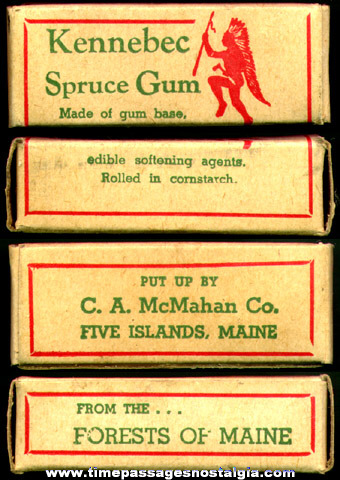There's the pine nuts from the cones, and tea from the needles (leaves) is supposed to be a source of vitamin C. Not sure the rest of it would be very appetizing... 
PS also, chewing gum from hardened spruce tree sap is supposed to be good for dental health.
http://www.adirondackalmanack.com/2010/05/lets-eat-adirondack-spruce-gum.html
Gum collectors scored spruce trees with an ax. The tree filled the wound with sap, which weathered and hardened over the summer and into winter. In early spring, Adirondackers used an ax or a picker make from a tin can with a sharp edge or scraper attached on the end of a long pole. Boiled and processed, the gum was broken into bite-sized chunks. Still brittle, it took a few seconds to soften in the mouth, and retained a distinctively “sprucy” taste.
Enterprising men and women could collect hundreds, even thousands of pounds each year, to sell to manufacturers or process at home. In good years, one could sell the collected gum for as much as a dollar a pound. In 1881, the Pulaski Democrat announced, “A gentleman was in Lowville the other day, buying all the spruce gum that could be found in the market… The gum is shipped to Lowell, Mass., where it finds ready sale.” In 1916, John Kelly of Croghan collected and sold more than 3,000 pounds, “quite an achievement when taken into consideration that Mr. Kelly is well up into the sixties and did the work alone.”
In 1870, Thomas Adams of Staten Island, NY, developed chewing gum made from the sap of the Mexican Chiclezapote tree, and invented the Chiclet. Softer and sweeter, the new gum gradually outpaced the demand for brittle, unsweetened spruce gum.

 = new reply since forum marked as read
= new reply since forum marked as read
